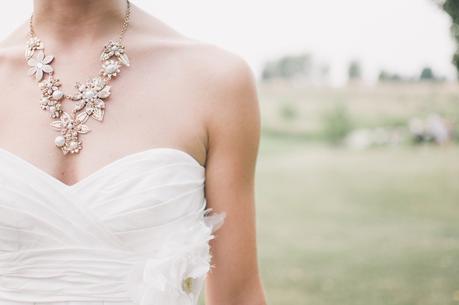Jewelry is an important wardrobe accessory must-have for many women. These beautiful creations have been around since ancient times. Ancient ruins have uncovered many articles of jewelry that women of that time wore. A study of the early history of jewelry is fascinating. Necklaces that adorned women long ago were made of things around them like small colored stones, seeds, and even bone pieces. Almost every civilization had jewelry to tell their story. It is intriguing to look into the background of various adornment practices. Hunters often wore parts of their kill to bring luck in future hunts.
It may be surprising to some that diamonds did not become a favored gem until the 1300's. This is when men figured out how to cut these stones to bring forth the beauty. Earlier humans likely thought that lumps of coal were not worth wearing. Different cultures have different styles of jewelry. Some cultures believe that stones are mystical or even magical. South Asian brides wear 12 gemstones each jewel has a different meaning or auspicious sign. Clearly, it was important to choose the right jewelry back then. So it is today in many circles. Jewelry and women are still interwoven.

Jewelry for brides is still a popular tradition. Most women wear light stones like opals or diamonds. Jewelry stores cater to brides with lovely visions of sparkling gems amidst rich golden chains or silver clasps. This is a terrific time to buy someone a unique piece of bridal jewelry for her to wear that "something new" down the aisle. Of course, many brides wear heirloom pieces handed down for generations. This penchant for bridal jewelry has been seen in most generations since the times of ancient civilizations. Just like white gowns symbolize a bride's purity, different gemstones have varying meanings.
It has been discovered that necklaces for women have been common for centuries. Early eras only allowed the wealthy and elite individuals to wear jewels. Commoners had to find colorful alternatives if they wished to dress up. Many of today's popular jewelry actually had a practical purpose originally. Rings were worn to seal wax as evidence of someone's authentic signature. Later rings were a sign of an important commitment, like wedding rings. Brooches and some clasps were used to hold clothing seams together. Today these jewelry styles are more decorative than practical. Originally, necklaces had religious or other deep symbolism displayed with dangling objects.
Early on, ancient people wore jewelry as a way to protect themselves from harm. Egyptian jewelry often included different amulets with signs or symbols of various gods or spirits engraved on them. These, too were for protection or to bring about something specific, like a spell. Women often wore amulets with a fertility goddess symbol if they wanted to have children. Different jewelry fashions became symbolic of royalty, like crowns or tiaras worn by modern-day queens and princesses. Native Americans adorned themselves with objects they saw in nature. When the English came with their sparkly fake gems, these native people were astonished.
While women might yearn for expensive jewels in prestigious jewelry stores, they shouldn't forget to browse lesser known shops for precious authentic finds that will make others jealous. Jewelry remains important and has significance to many people today.
**

